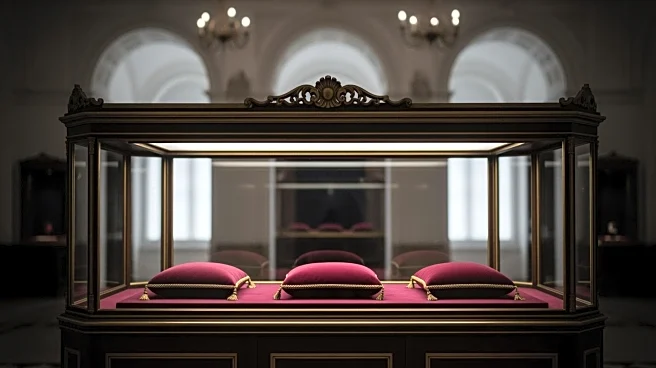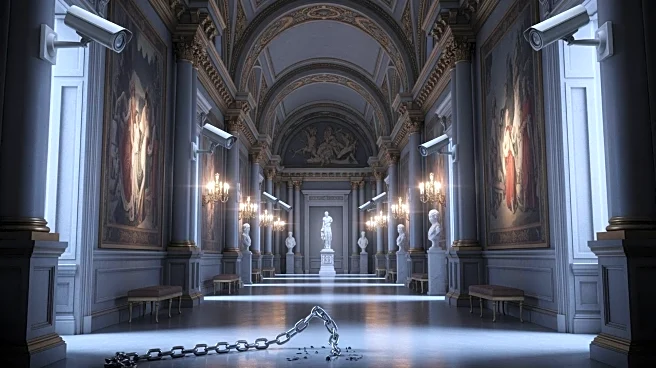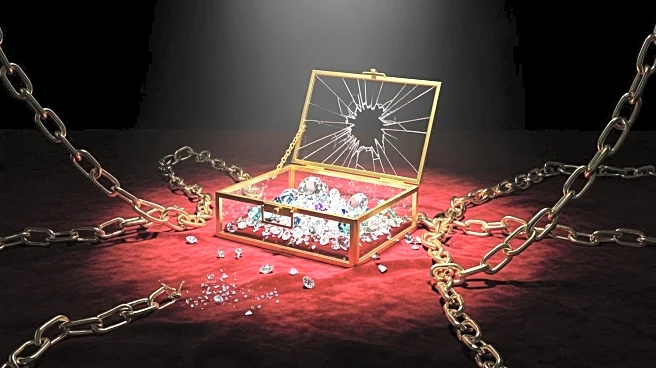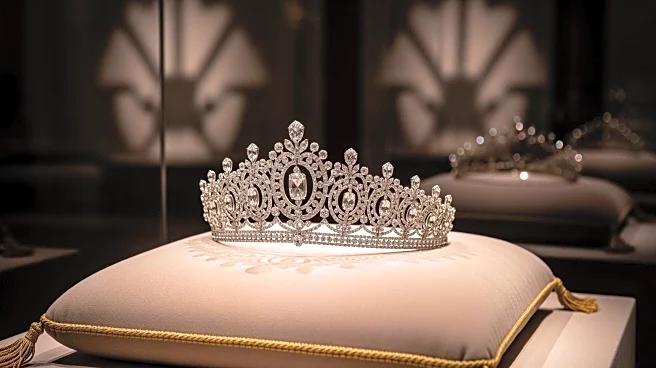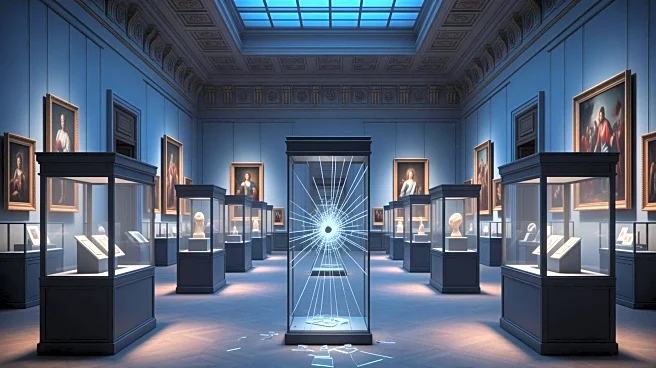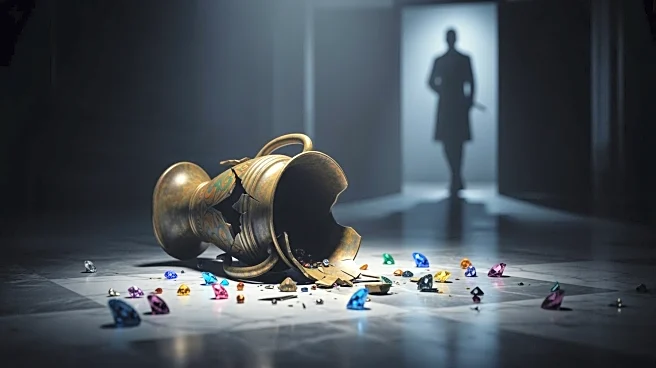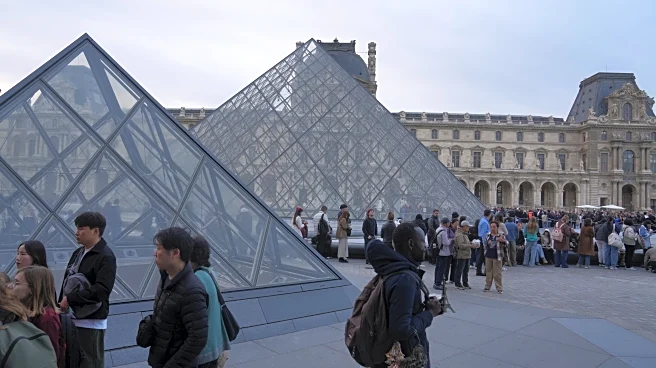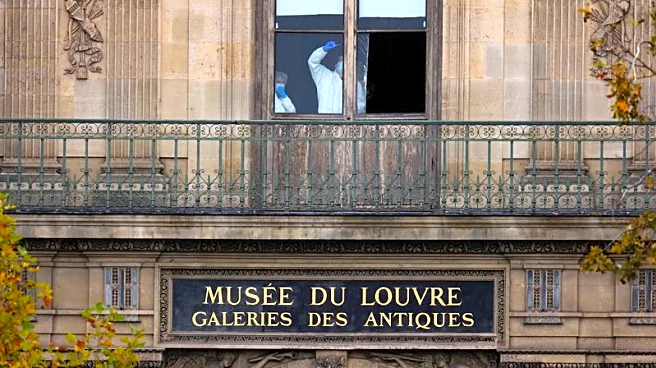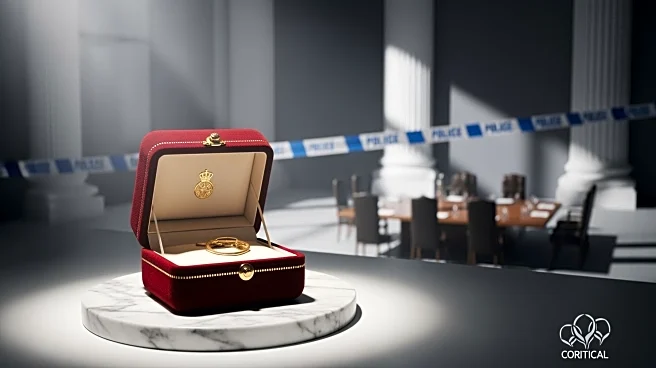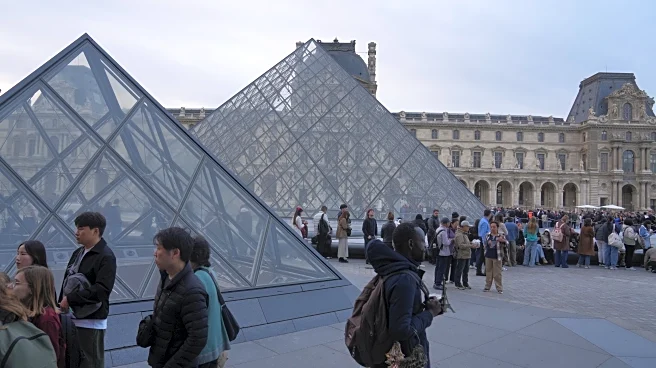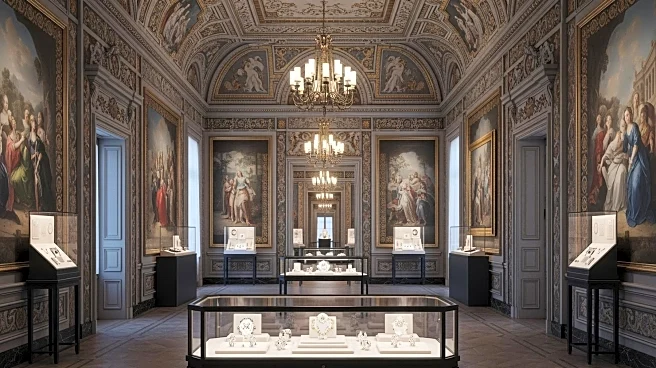What's Happening?
On October 19, 2025, a significant theft occurred at the Louvre museum in Paris, France, where thieves stole millions of dollars' worth of jewelry. The heist involved four suspects who used a mechanical
ladder to access the Gallery of Apollo, cutting through a window and threatening guards to steal eight items of France's crown jewels. The stolen items, valued at approximately €88 million ($102 million), included tiaras, necklaces, and earrings from the 19th century. The theft was completed in less than eight minutes, and the suspects escaped on scooters. DNA traces were found on a helmet and gloves left behind by the thieves. Following the incident, Louvre director Laurence des Cars resigned, calling the theft a 'terrible failure.' Interpol is involved in the investigation, and authorities are optimistic about resolving the case.
Why It's Important?
The theft at the Louvre raises significant concerns about the security of cultural institutions in France. The incident highlights vulnerabilities in museum security systems, potentially prompting a review and upgrade of security measures across French museums. The resignation of the Louvre director underscores the gravity of the situation and may lead to increased scrutiny and accountability within museum management. The involvement of Interpol suggests the possibility of an international criminal network targeting high-value artifacts, which could impact global art security protocols. The theft also poses a threat to France's cultural heritage, as the stolen items are considered national treasures.
What's Next?
Authorities are expected to intensify their investigation, utilizing the DNA evidence found at the scene to track down the suspects. The French senate may conduct hearings to address security lapses and propose measures to prevent future incidents. Museums across France might implement stricter security protocols and collaborate with international agencies to safeguard their collections. The art community and cultural heritage organizations may advocate for increased funding and resources to protect valuable artifacts. Public awareness campaigns could be launched to emphasize the importance of preserving cultural heritage and preventing art theft.
Beyond the Headlines
The theft at the Louvre could lead to a broader discussion on the ethical responsibilities of museums in protecting cultural heritage. It may prompt debates on the balance between public access to art and the security of valuable collections. The incident could also influence the art market, with increased scrutiny on the provenance of high-value items and potential impacts on insurance premiums for museums. Long-term, the theft might drive innovation in security technology, with museums investing in advanced surveillance systems and forensic tools to prevent similar incidents.
